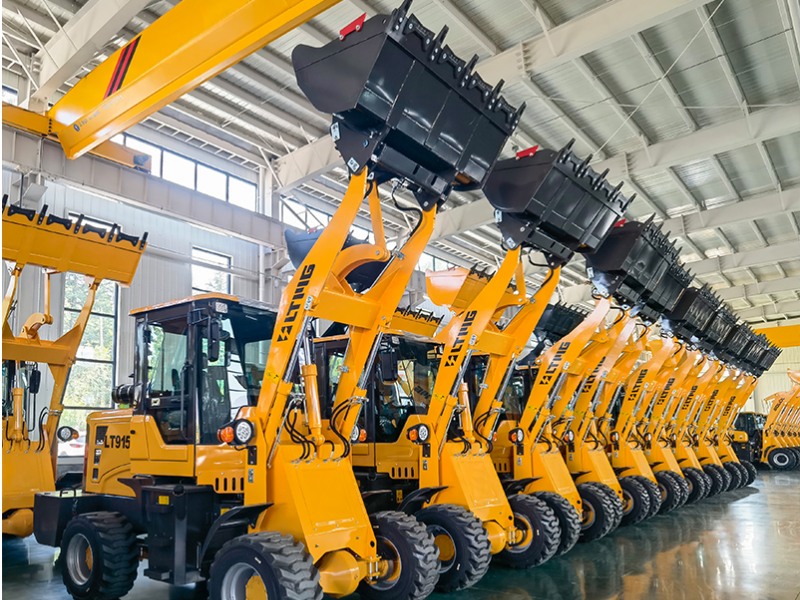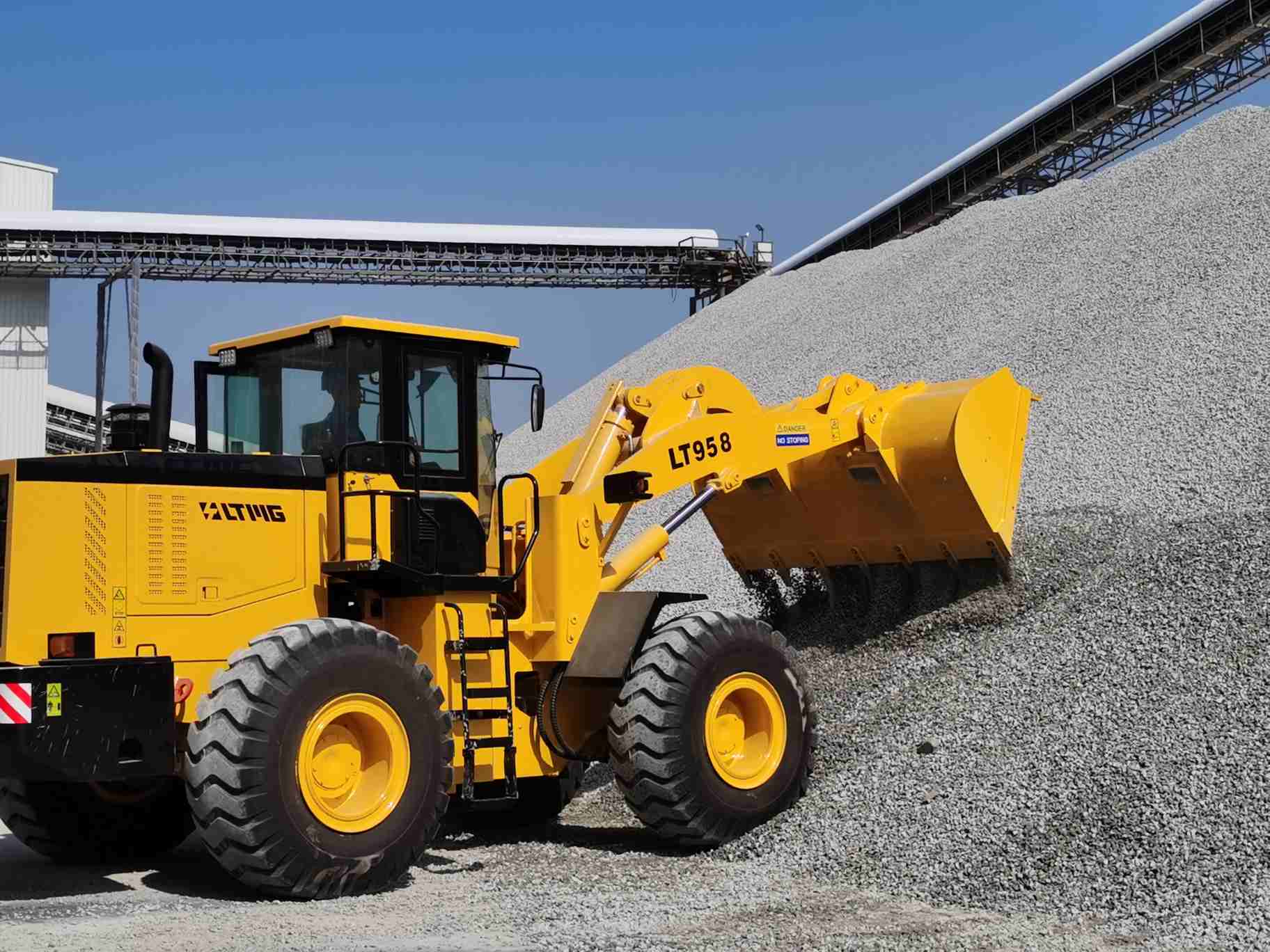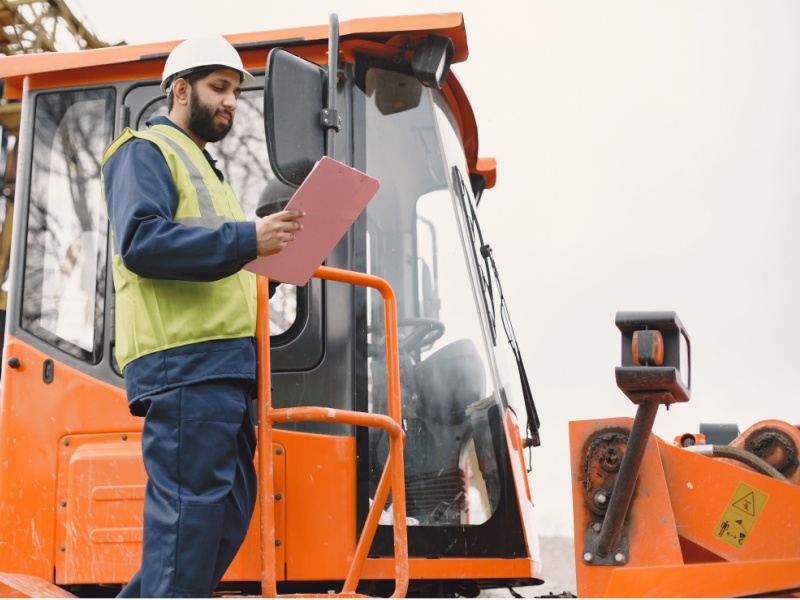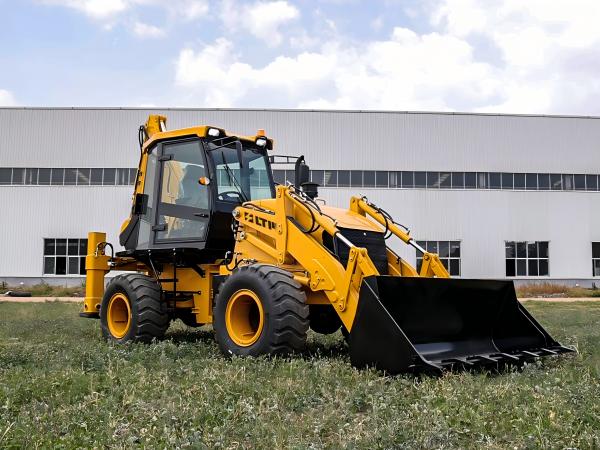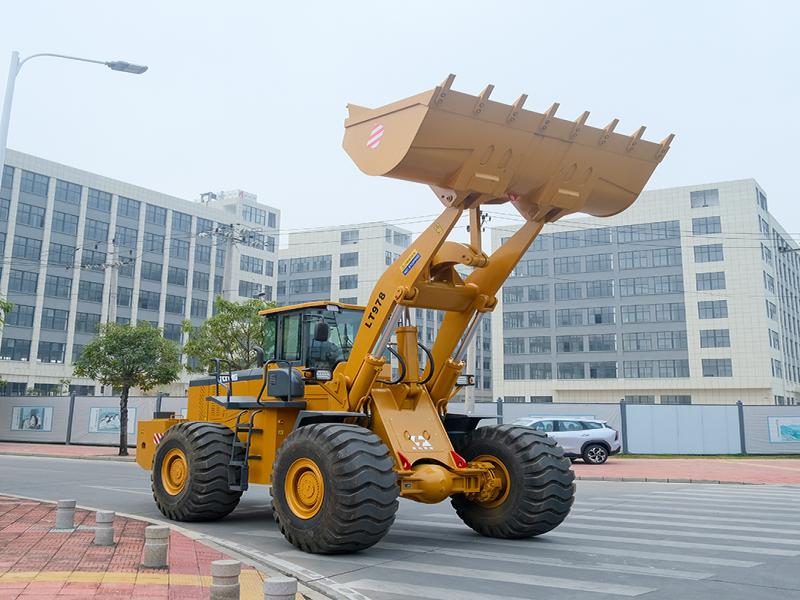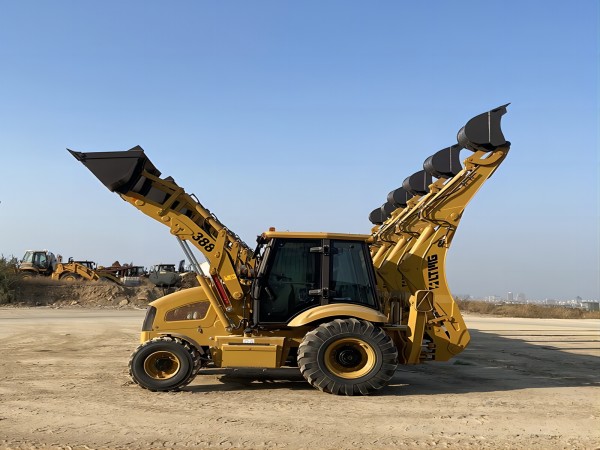Giữ cho thiết bị của bạn hoạt động hiệu quả: 5 sự cố thường gặp của máy xúc lật và cách giải quyết nhanh chóng
Jul 22, 2025
Máy xúc lật là thiết bị cốt lõi thiết yếu tại các công trường xây dựng, hầm mỏ, trang trại và cảng biển. Chúng thực hiện công việc bốc xếp, di chuyển và vệ sinh nặng nhọc hàng ngày. Tuy nhiên, giống như bất kỳ máy móc làm việc chăm chỉ nào, máy xúc lật chắc chắn sẽ gặp phải nhiều vấn đề khác nhau. Việc xác định và giải quyết kịp thời những vấn đề này không chỉ giúp giảm thiểu thời gian ngừng hoạt động tốn kém mà còn đảm bảo vận hành an toàn và kéo dài tuổi thọ thiết bị. Bài viết này sẽ phân tích sâu 5 sự cố thường gặp nhất của máy xúc lật và đưa ra các giải pháp rõ ràng, khả thi để giúp bạn duy trì hiệu suất hoạt động tốt nhất cho thiết bị. Vấn đề 1: Phản ứng truyền chậm hoặc trượt (Vấn đề truyền động)Hệ thống truyền động là cốt lõi của hệ thống truyền động của máy xúc và tình trạng của hệ thống này ảnh hưởng trực tiếp đến khả năng di chuyển và vận hành của thiết bị. Các triệu chứng thường gặp:Các triệu chứng phổ biến bao gồm khó sang số, va chạm mạnh, trượt số hoặc mất điện khi lái xe, tiếng ù hoặc tiếng kẽo kẹt bất thường từ hộp số, nhiệt độ dầu hộp số cao và báo động trên bảng điều khiển. Nguyên nhân gốc rễ:Nguyên nhân gốc rễ bao gồm các vấn đề về dầu, chẳng hạn như mức dầu hộp số thấp, dầu bị nhiễm bẩn hoặc sử dụng loại dầu không phù hợp; tắc bộ lọc, tức là bộ lọc hộp số không được thay thế trong một thời gian dài, dẫn đến tắc mạch dầu; hao mòn bên trong, chẳng hạn như hao mòn các bộ phận bên trong như đĩa ly hợp, đĩa ma sát hoặc bánh răng; và lỗi điều khiển điện tử, tức là hỏng van điều khiển hoặc van điện từ, dẫn đến không thể thực hiện lệnh chuyển số chính xác. Giải pháp:Kiểm tra dầu thường xuyên: Kiểm tra mức dầu hộp số hàng ngày và thay dầu hộp số cùng lõi lọc đúng theo chu kỳ khuyến nghị của nhà sản xuất. Đây là biện pháp phòng ngừa cơ bản và quan trọng nhất.Sử dụng loại dầu phù hợp: Đảm bảo luôn sử dụng loại dầu truyền động chuyên dụng đáp ứng thông số kỹ thuật của thiết bị.Chú ý vệ sinh: Giữ hộp số và bộ tản nhiệt sạch sẽ để đảm bảo hiệu suất tản nhiệt tốt.Chẩn đoán chuyên nghiệp: Nếu sự cố vẫn tiếp diễn, đặc biệt là liên quan đến tiếng ồn bên trong hoặc trượt nghiêm trọng, hãy dừng hoạt động ngay lập tức và liên hệ với kỹ thuật viên chuyên nghiệp để kiểm tra nhằm tránh lỗi lan rộng hơn. Vấn đề 2: Lỗi hệ thống thủy lựcHệ thống thủy lực là "cơ bắp" của máy xúc, chịu trách nhiệm cho tất cả các hành động quan trọng như nâng cần trục và lật gầu xúc. Các triệu chứng thường gặp:Tốc độ nâng cần hoặc lật gầu chậm lại đáng kể. Ngay cả khi tốc độ động cơ cao, lực nâng vẫn không đủ. Bơm thủy lực phát ra tiếng rít chói tai. Có dấu hiệu rò rỉ dầu rõ ràng tại các khớp nối ống dầu thủy lực hoặc xi lanh, và nhiệt độ dầu thủy lực quá cao. Nguyên nhân gốc rễ:Ô nhiễm dầu là nguyên nhân hàng đầu gây ra sự cố hệ thống thủy lực. Bụi, hơi ẩm hoặc các hạt kim loại xâm nhập vào dầu sẽ nhanh chóng làm mòn bơm, van và xi lanh; tắc nghẽn lõi lọc, tức là lõi lọc dầu thủy lực (bao gồm cả lõi lọc dầu hút và hồi dầu), dẫn đến việc cung cấp dầu không đủ; mức dầu quá thấp, tức là mức dầu trong bình dầu thủy lực thấp hơn mức tiêu chuẩn, khiến hệ thống hít phải không khí. Các bộ phận cốt lõi bị mòn, chẳng hạn như bơm thủy lực, van điều khiển chính hoặc phớt bên trong xi lanh, dẫn đến rò rỉ bên trong và không thể tạo áp suất. Giải pháp:Giữ dầu sạch: Thay dầu thủy lực và tất cả các lõi lọc định kỳ. Khi thêm hoặc thay dầu thủy lực, hãy đảm bảo môi trường xung quanh và dụng cụ luôn sạch sẽ.Kiểm tra hàng ngày: Kiểm tra mức dầu thủy lực trước khi bắt đầu làm việc mỗi ngày, kiểm tra tất cả các đường ống và mối nối thủy lực và xử lý rò rỉ kịp thời.Tránh quá tải: Hoạt động quá tải trong thời gian dài sẽ làm tăng tốc độ mài mòn của bơm và van thủy lực.Kiểm tra áp suất chuyên nghiệp: Nếu chuyển động yếu, hãy yêu cầu kỹ thuật viên sử dụng đồng hồ đo áp suất chuyên nghiệp để kiểm tra áp suất hệ thống nhằm xác định chính xác điểm lỗi. Vấn đề 3: Khó khởi động động cơ hoặc khói đen (Sự cố động cơ)Động cơ là trái tim của máy xúc, và bất kỳ vấn đề nào xảy ra với động cơ đều có thể khiến thiết bị dừng hoạt động hoàn toàn. Các triệu chứng thường gặp:Các triệu chứng phổ biến bao gồm khó khởi động khi động cơ nguội hoặc nóng, cần thử nhiều lần, không đủ công suất khi làm việc, cảm thấy "yếu", khói có màu bất thường thoát ra từ ống xả (khói đen: quá trình đốt cháy không hoàn toàn; khói xanh: dầu cháy; khói trắng: nhiên liệu có chứa nước hoặc chất làm mát đi vào xi lanh), nhiệt độ nước trong động cơ quá cao hoặc có tiếng gõ bất thường khi chạy. Nguyên nhân gốc rễ:Nguyên nhân gốc rễ bao gồm hệ thống nhiên liệu, chẳng hạn như bộ lọc diesel bị tắc, khả năng phun sương của kim phun kém hoặc chất lượng nhiên liệu kém; trong hệ thống nạp, bộ lọc không khí bị tắc nghiêm trọng, dẫn đến lượng không khí nạp không đủ; trong hệ thống làm mát, bộ tản nhiệt bị tắc, bộ điều nhiệt bị lỗi hoặc chất làm mát không đủ, dẫn đến động cơ quá nhiệt; cũng có vấn đề với hệ thống bôi trơn, tức là áp suất dầu thấp hoặc không đủ dầu. Giải pháp:Thực hiện bảo dưỡng nghiêm ngặt: Theo hướng dẫn bảo dưỡng, thay thế "ba bộ lọc" (lọc động cơ, lọc dầu diesel, lọc gió) và dầu động cơ đúng hạn.Đảm bảo chất lượng nhiên liệu: Thêm dầu diesel sạch và đạt tiêu chuẩn từ các kênh thông thường.Giữ cho bộ tản nhiệt sạch sẽ: Thường xuyên sử dụng khí nén để thổi bay bụi bẩn và mảnh vụn trên bề mặt bộ tản nhiệt.Chú ý bảng đồng hồ: Luôn chú ý đến các chỉ số quan trọng như đồng hồ đo nhiệt độ nước và đồng hồ đo áp suất dầu, và dừng máy ngay lập tức để kiểm tra nếu phát hiện bất kỳ dấu hiệu bất thường nào. Đối với các vấn đề như khói đen, thường bắt đầu bằng việc kiểm tra lọc gió và lọc dầu diesel. Vấn đề 4: Lốp xe bị mòn hoặc hư hỏng quá mức (Vấn đề về lốp/bánh xe)Lốp xe là bộ phận duy nhất của máy xúc tiếp xúc với mặt đất và tình trạng của lốp xe ảnh hưởng trực tiếp đến lực kéo, độ ổn định và thậm chí là độ an toàn khi vận hành thiết bị. Các triệu chứng thường gặp:Hoa lốp mòn không đều, chẳng hạn như mòn quá mức ở giữa, hai bên hoặc một số bộ phận, nứt và phồng ở thành lốp, hoặc gai lốp bị vật sắc nhọn đâm thủng, va chạm bất thường hoặc thân xe rung lắc khi lái xe, áp suất lốp thường xuyên giảm, cần bơm hơi thường xuyên, bu lông trục bánh xe bị lỏng hoặc biến dạng và vành xe bị nứt. Nguyên nhân gốc rễ:Áp suất lốp không đúng. Áp suất lốp quá cao sẽ gây mòn nghiêm trọng ở giữa gai lốp. Áp suất lốp quá thấp sẽ gây mòn cả hai mặt và làm tăng nguy cơ nổ lốp. Quá tải trong thời gian dài, tức là vận hành liên tục vượt quá tải trọng định mức, sẽ gây áp lực rất lớn lên cấu trúc lốp. Điều kiện làm việc khắc nghiệt, tức là thường xuyên lái xe trên đá sắc nhọn, chất thải xây dựng hoặc địa hình gồ ghề. Thói quen vận hành không tốt, chẳng hạn như rẽ gấp, rẽ tại chỗ và lao vào đống vật liệu với tốc độ cao, sẽ làm mòn lốp nghiêm trọng. Ngoài ra còn có sự bất cẩn trong bảo dưỡng, tức là không vệ sinh đá bám vào rãnh lốp kịp thời, và bu lông moay-ơ bánh xe không được siết chặt theo mô-men xoắn quy định. Giải pháp:Kiểm tra áp suất lốp hàng ngày: Khi lốp xe nguội, hãy sử dụng đồng hồ đo áp suất lốp để kiểm tra và điều chỉnh theo giá trị tiêu chuẩn do nhà sản xuất khuyến nghị trước khi bắt đầu công việc hàng ngày. Tăng cường kiểm tra trực quan: Đi xung quanh xe để kiểm tra xem có vết cắt và vết phồng rõ ràng nào trên bề mặt lốp không, và kịp thời loại bỏ đá hoặc các vật lạ khác bám vào gai lốp.Vận hành lái xe tiêu chuẩn: Tránh chở quá tải, giảm lái xe tốc độ cao và rẽ gấp, và tiếp cận nhẹ nhàng khi xúc vật liệu.Siết chặt và kiểm tra thường xuyên: Sử dụng cờ lê lực để kiểm tra và siết chặt tất cả các bu lông trục bánh xe thường xuyên. Ngoài ra, hãy kiểm tra xem vành xe có bị biến dạng hoặc nứt không.Chọn lốp xe phù hợp: Chọn lốp xe có hoa văn và cấp độ chống mài mòn tương ứng theo điều kiện làm việc chính (như công trình đất, bãi đá, bãi than, v.v.). Vấn đề 5: Lỗi hệ thống điện (Sự cố về điện)Các máy xúc hiện đại ngày càng dựa vào hệ thống điện phức tạp để kiểm soát và giám sát trạng thái thiết bị. Các triệu chứng thường gặp:Đèn pha và đèn làm việc tắt hoặc nhấp nháy, bộ khởi động không phản hồi hoặc không thể quay, pin thường xuyên hết và đèn báo trên bảng điều khiển, cụm đồng hồ hoặc màn hình hiển thị không hoạt động bình thường. Nguyên nhân gốc rễ:Các vấn đề về ắc quy, chẳng hạn như ắc quy bị lão hóa, đầu cọc bị ăn mòn hoặc kết nối lỏng lẻo; lỗi máy phát điện, tức là máy phát điện không thể sạc ắc quy bình thường; hư hỏng đường dây, chẳng hạn như bị lão hóa, đứt, đoản mạch hoặc tiếp xúc kém của các đầu nối; và cầu chì bị đứt, tức là mạch bị quá tải hoặc đoản mạch khiến cầu chì bị cháy. Giải pháp:Bảo dưỡng ắc quy: Giữ các cực ắc quy sạch sẽ và khít, bôi bơ để chống ăn mòn. Kiểm tra mức điện phân thường xuyên (nếu có).Kiểm tra máy phát điện: Thường xuyên kiểm tra độ căng của dây curoa máy phát điện. Nếu ắc quy thường xuyên yếu, hãy kiểm tra điện áp sạc của máy phát điện.Bảo vệ hệ thống dây điện: Bảo vệ hệ thống dây điện của toàn bộ xe để tránh bị ép, cọ xát hoặc tiếp xúc với dầu và nhiệt độ cao.Kiểm tra cầu chì: Nếu thiết bị điện không hoạt động, trước tiên hãy kiểm tra hộp cầu chì tương ứng. Kết luận: Phòng bệnh hơn chữa bệnhViệc quản lý máy xúc lật đòi hỏi phải thiết lập kế hoạch kiểm tra hàng ngày nghiêm ngặt và bảo trì thường xuyên để bạn có thể phát hiện và giải quyết hầu hết các vấn đề nêu trên trước. Xử lý kịp thời các sự cố nhỏ là cách tốt nhất để tránh chúng trở thành những lần đại tu tốn kém và thời gian ngừng hoạt động kéo dài. Kết hợp bảo trì phòng ngừa vào công việc hàng ngày, máy xúc lật của bạn sẽ hoàn lại khoản đầu tư với hiệu suất cao hơn, tuổi thọ dài hơn và hiệu suất an toàn hơn.
